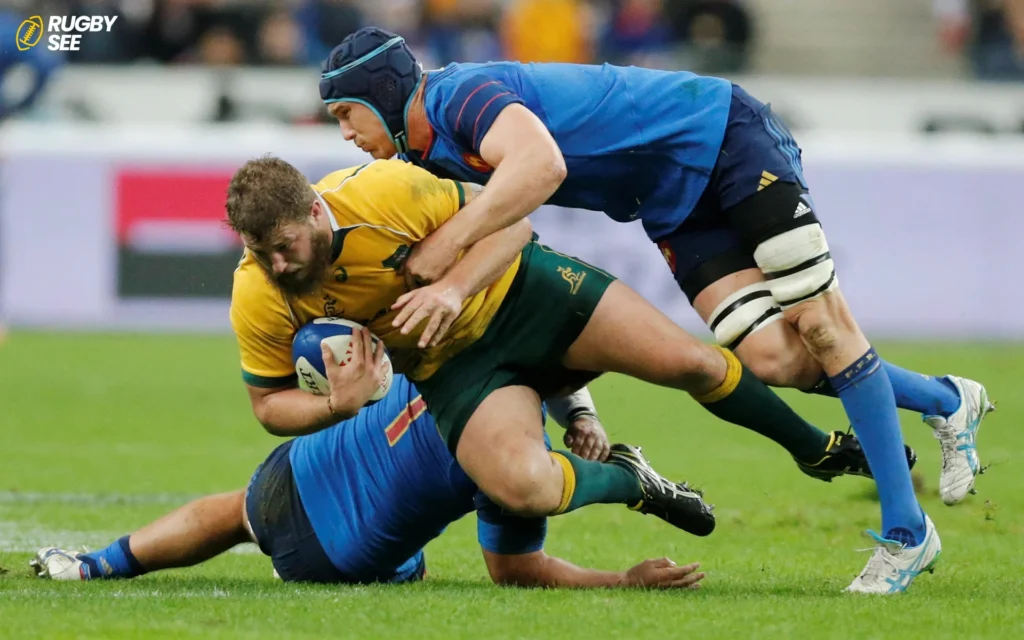Rugby Union, a sport renowned for its combination of strength, skill and agility, has seen the emergence of exceptional athletes with electrifying speed on the field. Among the myriad talents on display in this dynamic sport, the quest to identify the fastest player in rugby union continues to fascinate fans and pundits alike. In this comprehensive exploration of Rugbysee, we delve into the realm of speedsters in rugby union, examine the characteristics that define them, examine notable contenders for the title and explore the factors that contribute to their blistering pace.
The Need for Speed in Rugby Union
Speed is a coveted attribute in rugby union, offering players a decisive advantage over their opponents. Whether it’s breaking through defensive lines, chasing down kicks, or scoring exhilarating tries, the ability to accelerate quickly and maintain top-end speed can turn a game on its head. As such, the quest to identify the fastest rugby union player is a testament to the importance of speed in the modern game.
The Contenders: Speedsters of Rugby Union
Numerous players have left their mark on the rugby world with their exceptional speed and agility. Among them, a few standout contenders consistently dominate discussions about the fastest rugby union player:

Carlin Isles:
Hailing from the United States, Carlin Isles is a name synonymous with speed in rugby. Before transitioning to rugby, Isles showcased his sprinting prowess on the track, competing at an elite level. His background in athletics provided him with a solid foundation of speed, which he seamlessly translated to the rugby field. As a winger in rugby sevens, Isles’ acceleration and agility have made him a standout player, capable of leaving defenders grasping at thin air as he races towards the try line.
Portia Woodman:
In the realm of women’s rugby, Portia Woodman of New Zealand is celebrated for her electrifying pace and elusive running style. With a background in both rugby and netball, Woodman possesses the agility and speed to outmaneuver her opponents with ease. As a winger for the New Zealand women’s rugby sevens team, Woodman’s ability to evade tackles and exploit gaps in the defense has made her a force to be reckoned with on the international stage and if you want to know about Wearing Glasses read can rugby players wear glasses?
Marika Koroibete:
Hailing from Fiji and later representing Australia, Marika Koroibete is another player known for his raw pace and finishing ability. With a background in rugby league, Koroibete seamlessly transitioned to rugby union, where his blistering pace on the wing has made him a constant threat to opposition defenses. His ability to accelerate past defenders and find the try line with ease has solidified his reputation as one of the fastest players in the game.
Factors Influencing Speed in Rugby Union
While natural talent certainly plays a role, several factors contribute to a player’s speed and agility in rugby union:

Genetics:
Some players are blessed with genetic traits that predispose them to be faster and more agile than others. Factors such as muscle fiber composition, limb length, and stride mechanics can all influence a player’s speed potential.
Training and Conditioning:
Dedicated training and conditioning programs are essential for developing speed and agility in rugby union. Sprint drills, plyometrics, and strength training exercises help improve acceleration, agility, and top-end speed.
Game Intelligence:
Understanding the nuances of the game, such as when to change direction, exploit space, or time runs effectively, can give players a competitive edge in terms of speed and agility.
Leveraging Technology for Speed Enhancement
Advancements in sports science and technology have revolutionized the way athletes train and prepare for competition. Biomechanical analysis, wearable technology, and data tracking systems provide valuable insights into a player’s running technique, stride length, and acceleration patterns. By leveraging these tools, players and coaches can identify areas for improvement and fine-tune their training programs to maximize speed potential.

The Role of Positional Speed
While the players mentioned earlier are celebrated for their exceptional speed, it’s important to recognize that speed can manifest differently depending on a player’s position on the field. For example:
- Wingers: Wingers are typically the fastest players on the team, responsible for exploiting open space on the edges of the field and finishing off attacking moves with speed and agility.
- Fullbacks: Fullbacks also require significant speed and agility, as they often join the attacking line from deep positions and must cover large areas of the field defensively.
- Halfbacks: Scrum-halves and fly-halves may not possess the outright speed of wingers or fullbacks, but they require quick acceleration and agility to execute plays and make split-second decisions under pressure.
- Forwards: While forwards are generally not known for their speed, there are exceptions, particularly among back row players and locks who may possess above-average athleticism and speed for their position.
The Impact of Speed on Team Dynamics
The presence of a fast player or players on a team can have a significant impact on team dynamics and strategy:
- Attacking Threat: Fast players create a constant attacking threat, forcing opposition defenses to allocate resources to contain them, which can create space for other players to exploit.
- Counter-Attacking Opportunities: Speedy fullbacks and wingers excel at launching counter-attacks from turnovers or opposition kicks, turning defense into attack in the blink of an eye.
- Defensive Cover: Speed is equally important in defense, allowing players to track back quickly to cover defensive lapses or make try-saving tackles on opposition breakaways.
Recognizing the Evolution of Speed in Rugby
The pursuit of speed in rugby is not a recent phenomenon but rather a longstanding tradition that has evolved alongside changes in training methods, tactics, and player athleticism. As the game continues to evolve, players are continually pushing the boundaries of human performance, achieving feats of speed and agility that would have been unimaginable in previous eras and if you want to know about being Fit in Rugby read Does rugby make you fit ?
Conclusion: Celebrating Speed as a Core Element of Rugby
In conclusion, the question of who is the fastest rugby union player is not only a matter of individual talent but also a reflection of the evolving nature of the sport. Whether it’s the raw pace of a winger streaking down the sideline or the quick thinking of a scrum-half darting through a gap in the defense, speed is a core element of rugby that adds excitement, drama, and spectacle to every match.
As fans continue to marvel at the exploits of speedsters on the field, they bear witness to the enduring appeal of rugby as a sport that celebrates athleticism, skill, and sheer determination. Whether in sevens or fifteens, at the grassroots or elite level, the quest for speed in rugby remains a captivating pursuit that inspires players and fans alike to reach for new heights of excellence on and off the field.
the quest to identify the fastest rugby union player is an ongoing fascination that highlights the importance of speed in the modern game. Whether it’s the explosive acceleration of Carlin Isles, the elusive running of Portia Woodman, or the raw pace of Marika Koroibete, these players exemplify the dynamic nature of rugby and the thrill of watching speedsters in action. As the sport continues to evolve, fans can expect to see more players pushing the boundaries of speed and agility, captivating audiences with their electrifying performances on the field.










